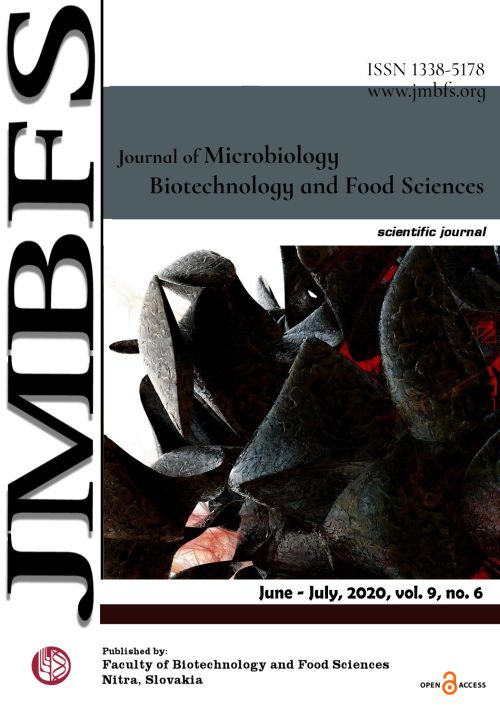ASSESSMENT OF THE ALTERNARIA MYCOTOXIN TENUAZONIC ACID IN FRUIT JUICE SAMPLES
Keywords:
Mycotoxins, Alternaria, Fruit Juices, HPLC, Tenuazonic Acid, IranAbstract
Tenuazonic acid (TeA) is a secondary toxic metabolite that is produced by some Alternaria species. The aim of this study was to determine the presence of TeA in fruit juice samples. A total of 50 (40 Grape; 5 Apple; 5 Orange) fruit juice samples were collected from Tabriz, Iran local market and were analyzed for TeA contamination via HPLC-UV. Analyte extraction was done by acetonitrile/water/formic acid (84/16/1 v/v/v). Lower limit of quantitation and upper limit of quantification for the developed method were 10 μg/L and 4000 μg/L respectively. Recovery ranged was between 96 to 108 %. The results showed 42.5% of grape juice samples were contaminated with TeA and the average concentration of TeA was 139.2±115.5 μg/L. However, it was not detected in apple and orange juice samples. This is the first study on the presence of TeA in Iranian food samples and showed that the necessity of more supervision on the production of grape juice.Downloads
Download data is not yet available.
Downloads
Published
2021-03-11
How to Cite
Vahid Safavizadeh, Ali Shayanfar, Masoud Ansarin, & Mahboob Nemati. (2021). ASSESSMENT OF THE ALTERNARIA MYCOTOXIN TENUAZONIC ACID IN FRUIT JUICE SAMPLES. Journal of Microbiology, Biotechnology and Food Sciences, 9(6), 1162–1165. Retrieved from https://office2.jmbfs.org/index.php/JMBFS/article/view/4503
Issue
Section
Food Sciences
License
Copyright (c) 2020 Vahid Safavizadeh, Ali Shayanfar, Masoud Ansarin, Mahboob Nemati

This work is licensed under a Creative Commons Attribution 4.0 International License.
All papers published in the Journal of Microbiology, Biotechnology and Food Sciences are published under a CC-BY licence (CC-BY 4.0). Published materials can be shared (copy and redistribute the material in any medium or format) and adapted (remix, transform, and build upon the material for any purpose, even commercially) with specifying the author(s).

